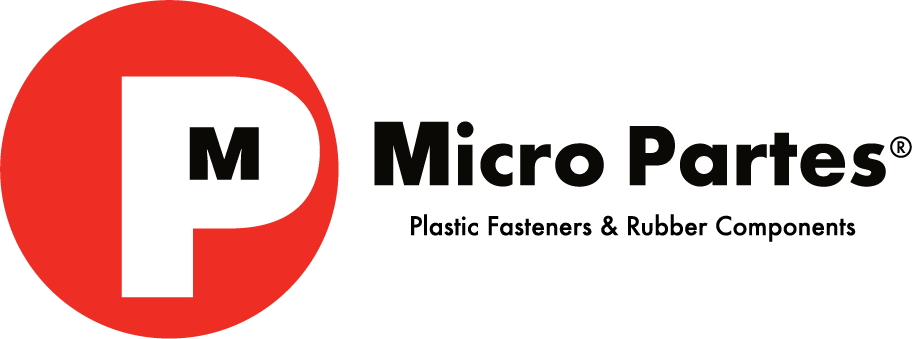Materials Properties
Nylon Polyamide 6/6 (PA)
The 6/6 Nylon of general use has a toughness, tensile strength and resistance to creep, particularly in high temperature. The nylon has excellent properties of wear, low coefficient of friction and a exceptional chemical resistance, particularly to hydrocarbons, grease and aromatic oils. The nylon is a hygroscopic material. Moisture acts like a plasticizer reducing the tensile strength, toughness and highest elongation, the impact resistance, and the absorption of energy characteristics. Outdoor weathering can be improved by the addition of carbon black.
The nylon will perform well en long range services in most of the applications and on temperatures up to 185°F (85°C). The nylon has a translucent off white color.
ApplicationsFasteners, Bearings, Gears, Cams, Gaskets, Printed Circuit Board Hardware, Washers, Spacers, Insulators, Spiral Wrap, Flexible Grommets, Wire Ties, Electronic Components, Bushings, Wiring Clips, Cable Clamps, Hole Plugs, Hose Clams.
Heat Stabilized Nylon 6/6
The 6/6 heat stabilized nylon has the same mechanical properties that the nylon 6/6 for general use has, with the additional advantage that its stabilized with heat, this material can withstand temperatures up to 250°F (121°C) on long range service in most applications. The heat stabilized nylon is off white in color.
ApplicationsFasteners, Bearings, Gears, Cams, Gaskets, Printed Circuit Board Hardware, Washers, Spacers, Insulators, Spiral Wrap, Flexible Grommets, Wire Ties, Electronics Components, Bushings, Wring Clips, Cable Clamps, Hole Plugs, Hose Clamps.
Nylon 6/6 Impact Modified
The nylon 6/6 impact modified has de additional advantage of very high impact strength at low temperature and the improved resistance to heat distortion on relation to the 6/6 nylon over the general use. The nylon 6/6 impact nylon is off white in color.
ApplicationsFasteners, Bearings, Gears, Cams, Printed Circuit Board Hardware, Washers, Spacers, Insulators, Electric Components, Bushings, Requiring additional impact resistance.
Nylon 6/6 with 33% glass
The glass-reinforced nylon has remarkable improvements on its properties in compare to the unreinforced compositions. The improvements include better tensile strength , deflection temperature, shear strength, improved creep resistance, better dimensional stability, less moisture absorption and thermal expansion. Are retained the good wear resistance, electric properties and the un-reinforced low coefficient of friction of nylon 6/6.
ApplicationsFasteners, Washers, Spacers, Insulators, Circuit Board Hardware, Requiring greater stiffness and strength.
Flame Retardant Nylon 6
The 6/6 Nylon flame retardant has similar properties to those of nylon 6/6 for general purpose with flame retardant additives for UL94V0 rating. The flame retardant nylon has a opaque off white in color.
ApplicationsFasteners, Printed Circuit Board Hardware, Washers, Spacers, Insulators Electric Components, Bushings, Strain Reliefs, Cable Clamps, Wiring Clamps.
High Density Polyethylene (HDPE)
The polyethylene is among the lowest density plastics and therefore is one of the lowest cost per cubic measure compared to other plastics. High density polyethylene has good toughness, excellent electrical properties, and chemical resistance, good low temperature brittleness and very low water absorption. Polyethylene is essentially inert, unaffected by strong and weak acids, alkalis, detergents, alcohols, and ketones. Polyethylene has low tensile strength and is subject to considerable creep and stress relaxation under load. Polyethylene will swell will chlorinated and aromatic hydrocarbons including gasoline and oils.
ApplicationsFasteners, Bearings, Gears, Cams, Washers, Spacers, Dowel Pins, Actuators.
Low-Density Polyethylene (LDPE)
The low density polyethylene is a low cost plastic in compare to others, is even more soft flex than the high-density polyethylene, this is the principal difference. Some of the properties that make the polyethylene such a convenient raw material are: among others low weigth, flexibility, high chemical resistance and outstanding electrical properties.
ApplicationsDecorative domes, Washers, Spacers, Insulators, Dowel Pins.
Polycarbonate (PC)
Polycarbonate is one of the toughest, most dimensionally stable thermoplastics over wide temperature range. Polycarbonate has exceptionally high impact strength. PC is unaffected by water below 140°F can be used in boiling water on a limited basis. PC is unaffected by greases, oils, detergents, aliphatic hydrocarbons, most mineral acids, and the higher alcohols. It is attacked by chlorinated hydrocarbons, and most aromatic solvents, esters, and ketones. PC has white water transparency with a 90% light transmission.
ApplicationsWashers, Spacers, Beaded Ties, Wire Clips, Protective Caps, Plugs, Spiral Wrap Flexible Grommets.
Polypropylene (PP)
Polypropylene has a good combination of rigidity and toughness, high rigidity at elevated temperatures, can be steam sterilized, good abrasion resistance and low coefficient of friction, no hydroscopic, excellent electrical properties, unique flex properties, good chemical resistance without stress cracking, one of the lowest densities, and high surface gloss. PP has the highest tensile strength of the olefins, high tensile modules, and relatively low impact resistance. PP has a good fatigue resistance excellent abrasion resistance and very low coefficient of friction comparable to nylon. However, lubricating nylon surfaces reduces the friction much more than for polypropylene. Polypropylene has excellent chemical resistance to dilute acids, concentrated acids (except oxidizing acids) alkalis, alcohols, detergents, and water. PP resists aromatic hydrocarbons, chlorinated hydrocarbons, greases, and oils at room temperature but is attacked at about 140°F.
ApplicationsFasteners, Spacers, Washers, Insulators, Hinge Applications, Containers, Battery Cases, Pump Parts.
IMPORTANT
While descriptions, applications, data and information contained in the above specifications are presented as a guide. Because many factors affect application and use we recommend that you make test to determine the suitability of a product for your particular purpose prior to use.


